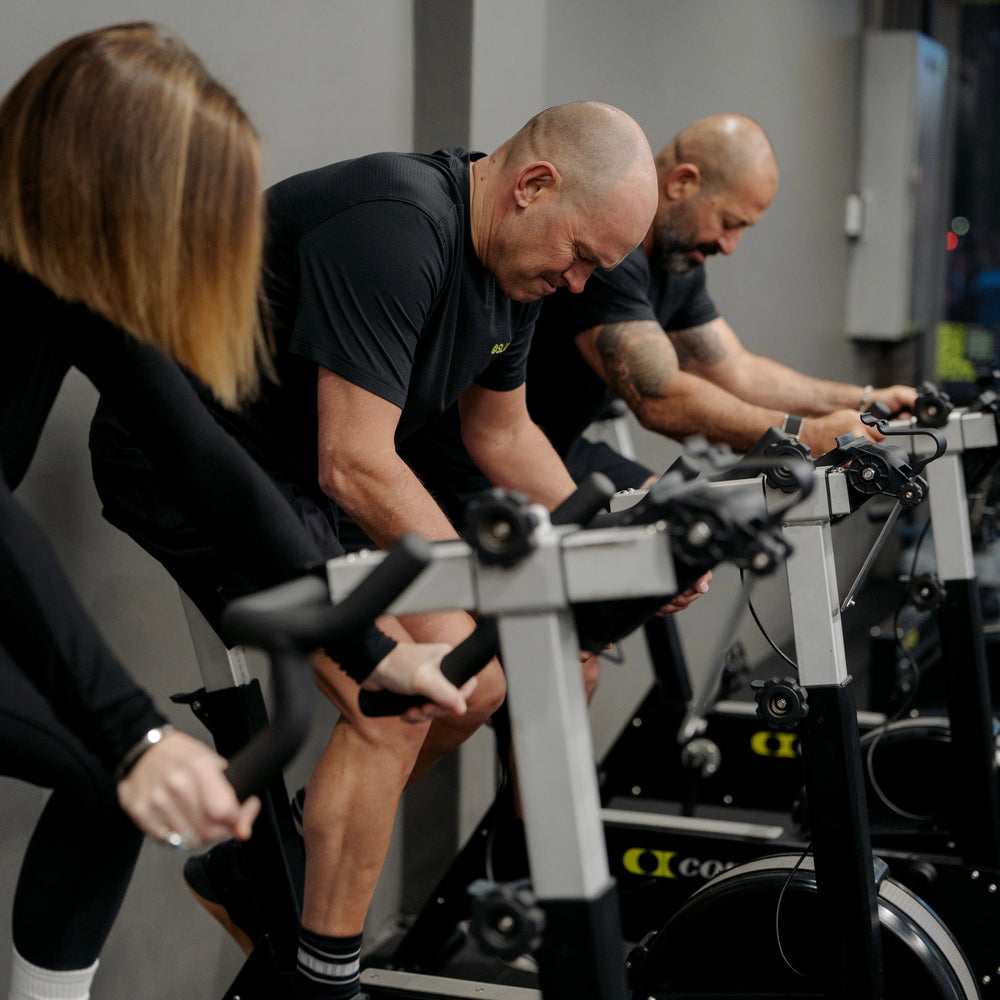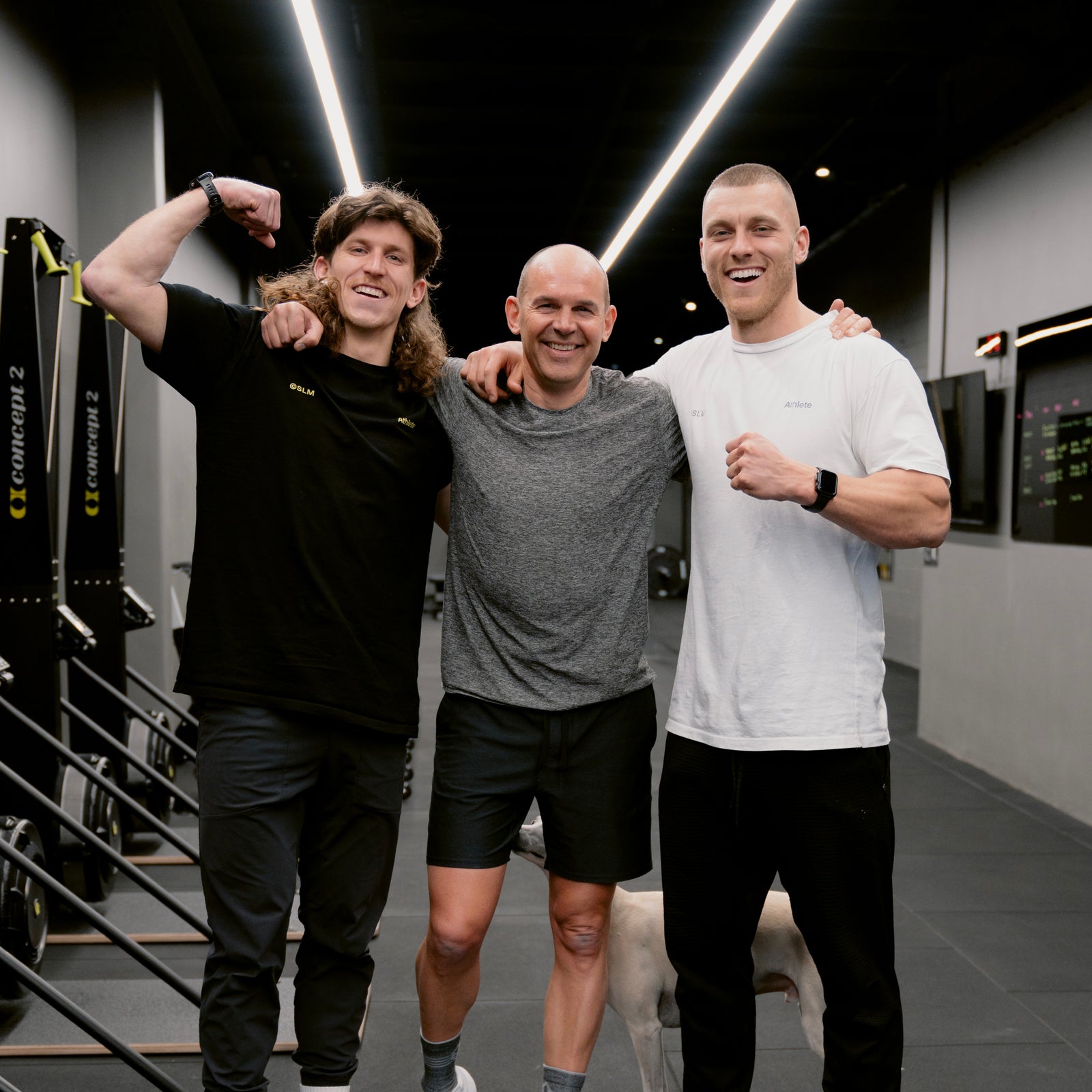
Do You Really Need to Lift Heavy to Build Muscle?
At some point, we were all told the same thing: if you want to build muscle, you need to squat, deadlift, and lift heavy weights. But here’s the truth: muscle doesn’t care what you lift—it only cares how close to failure you train.
The Science of Muscle Growth
Recent research has shown that hypertrophy (muscle growth) can occur across a wide rep range—anywhere between 5 to 30 reps, if you're training close to muscular failure. That means you don’t have to grind out heavy singles or doubles to grow muscle. You just need to push hard enough.
In fact, with accessory or isolated exercises, it’s often easier and safer to push to failure. Movements like dumbbell presses, cable rows, and hamstring curls offer external stability (benches, machines, etc.), so you don’t waste energy stabilising yourself. That allows you to fully target the muscle you’re working.
And with these types of exercises, moderate to high rep ranges (8–30) often work best. They help you maintain good form, create mechanical tension in the right muscles, and safely train to failure.
Strength vs. Hypertrophy: Know the Difference
It’s worth distinguishing here: training for strength and training for hypertrophy are not the same thing. They’re related, but each requires a different approach.
- Strength training is about your ability to produce maximal force—typically trained with low reps (1–5), longer rest periods, and a focus on neural adaptations (recruiting more motor units, improving coordination, etc.).
- Hypertrophy training, on the other hand, focuses on muscle growth, using moderate to high reps (6–30) and shorter rest periods to maximise muscular fatigue and tension.
Why train both?
Because they support each other. Building strength helps you lift heavier weights for more reps (which can enhance hypertrophy). Building muscle gives you more tissue to recruit when lifting heavy (which can enhance strength).
You can absolutely build muscle using lower rep ranges—especially when you're lifting heavy and training close to failure. But to train efficiently, it’s important to separate your goals. Focus on the method that best matches the outcome you’re chasing, not just what looks impressive. Knowing which exercises to choose, why you're doing them, and which rep ranges suit your goal makes all the difference.
What About Squats and Deadlifts?
Big compound lifts like squats and deadlifts are a different beast. Since they involve multiple muscle groups at once, you can typically lift much heavier loads compared to isolated movements. But heavier doesn’t automatically mean better—it only matters if you can safely take the target muscles close to failure. These are internally stabilised exercises, meaning you have to rely on your own core and full-body tension to stay safe and strong under the bar.
They also require:
- More technical skill
- Greater mobility and bracing ability
- A higher training age to push close to failure safely
Pushing compound lifts to failure in high rep ranges (10–30) often leads to aerobic or systemic fatigue, not muscle failure. Think about a 20-rep max squat—you’re not stopping because your quads are done. You’re stopping because your lungs are heaving, your vision’s narrowing, and your nervous system is overwhelmed.
That's not optimal for building muscle.
Instead, barbell lifts like these are better trained at lower reps (1–5) with more rest. You’ll get stronger, stay safer, and still see hypertrophy carryover by progressively lifting heavier loads over time.
Is Heavy Lifting “Functional”?
We’ve all been sold the idea that squats and deadlifts are inherently “functional” because they mimic real-life movements. But function is contextual. One of my biggest frustrations is seeing coaches throw clients under a barbell simply because it’s trendy, because they do it themselves, or—worse—because they believe it’s automatically more “functional.”
Functional training depends on:
- Your goals
- Your biomechanics
- Your training history
- Your ability to perform a movement safely
For some, barbell lifts are a perfect fit. For others, they’re a fast-track to injury. The idea that everyone needs to back squat or deadlift to be “functional” is outdated.
True functionality might look like:
- Reaching into cupboards
- Getting in and out of a car
- Playing with your kids on the floor
- Carrying groceries
- Climbing stairs
None of these look like a 140kg barbell lift—but they all require movement control, strength, mobility, and coordination. That’s why your training should include multi-directional movement, unilateral strength, and a variety of rep ranges, not just big bilateral barbell lifts.
The Benefits of Heavy Lifting (When Done Right)
Heavy lifting in the 1–5 rep range plays a vital role in building a stronger, more resilient body. It boosts maximal strength, neural efficiency, bone density, connective tissue, and athletic power—while also sharpening technique, mental toughness, and hormonal response. These gains can carry over to higher-rep hypertrophy work and improve overall injury resilience.
But here’s the thing: you don’t need barbell squats or deadlifts to reap these benefits. Choose lifts that suit your body and experience—like trap bar deadlifts, split squats, leg presses, or machines—and train them with intent.
Final Thoughts: Train Smart, Not Just Hard
If you’re squatting and deadlifting because you enjoy them, or because they support your goals—go for it. They’re great tools when used with purpose.
But if you’re only doing them because you feel like you “should,” it’s time to rethink things.
You can:
- Build muscle without a barbell
- Get stronger using a range of rep ranges
- Train with movements that actually reflect your life
Let’s move away from ego lifting. Let’s stop thinking progress only looks like adding plates to a barbell. And let’s celebrate the small wins—the final rep of a high-rep leg extension set, the quiet consistency of showing up week after week, the first time you move through a full range of motion without pain, or the moment you feel more balanced and stable in a movement that once felt shaky. These are the milestones that matter.
Strong isn’t about how much you lift.
Strong is how you train—intelligently, consistently, and with a purpose.
Ready to start your strength journey with SLM? Shoot me an email and let’s chat.
Jeremy Gleeson | Founder & Head Coach
Reference
Schoenfeld, B., Grgic, J., Ogborn, D., & Krieger, J. (2017). Strength and Hypertrophy Adaptations Between Low- vs. High-Load Resistance Training: A Systematic Review and Meta-analysis. Journal of Strength and Conditioning Research, 31(12), 3508–3523. https://doi.org/10.1519/JSC.0000000000002200

